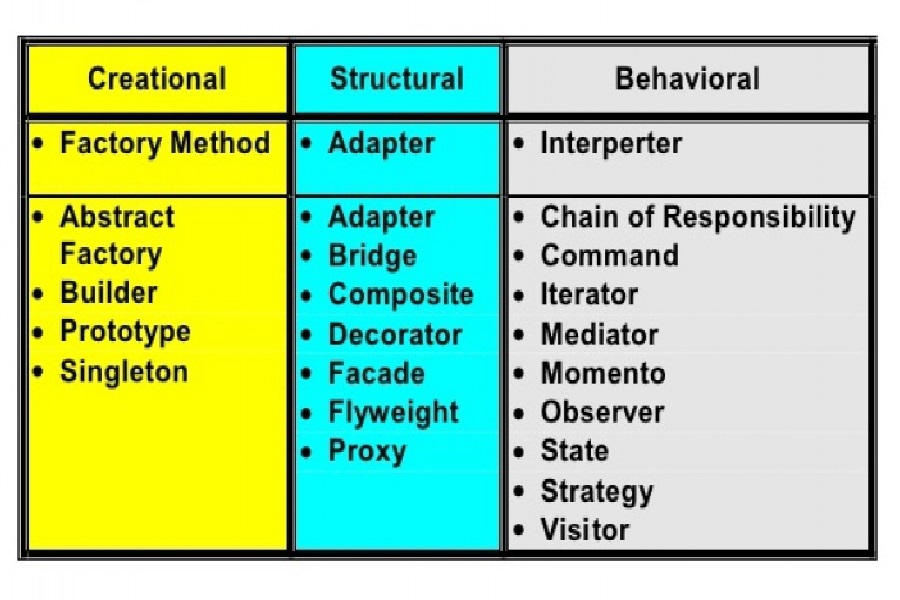This article is a chapter from the book The easiest way to learn design patterns
This chapter summarizes which design patterns can be used to solve any specific type of a software development problem. It’s intended to be a reference guide to help you find the right design pattern quickly.
All problem categories that we have discussed in this section are listed here. For each one of them, all suitable design patterns are provided. If there are multiple design patterns that can solve a problem of a particular type, a one-sentence summary will be provided next to each to help you decide which of them is more suitable to your specific situation.
Not knowing what object implementations you’ll need ahead of time
- Factory Method – if an object needs to be instantiated in one go
- Abstract Factory – if multiple object needs to be instantiated in one go
- Builder – if an object needs to be built step-by-step
Making several exact copies of a complex object
- Prototype
Using many instances of an object while keeping code running smoothly
- Object pool – facilitates the reuse of pre-instantiated objects
- Flyweight – allows you to have a very large number of similar objects without much performance penalty, but makes the code complicated
- Prototype – can be combined with Object Pool to make initial creation of the objects easier
Using the same single instance of an object throughout the application
- Singleton
Third party components aren’t directly compatible with your code
- Adapter
Adding new functionality to existing objects that cannot be modified
- Decorator
Accessing complex back-end logic from the presentation layer
- Facade – simplifies the access interface to the complex logic
- Proxy – caches the result of expensive operations
User interface and business logic are developed separately
- Bridge – suitable when front-end and back-end can be designed together up-front*
- Facade – suitable when back-end is hosted by a third party or cannot be designed alongside the user interface up-front
- Proxy – prevents services outage during back-end redeployment
Building a complex object hierarchy
- Composite
Implementing complex conditional logic
- Strategy – facilitates a conditional one-off action
- Factory Method – facilitates a conditional creation of a long-lived object
- Abstract Factory – facilitates a conditional creation of multiple long-lived objects
Multiple object instances of different types need to be able to communicate with each other
- Mediator – easier to implement when communication logic between different objects doesn’t expect to be changed
- Observer – easier to implement when communication between different objects is expected to change at runtime or during configuration
Multiple stages of processing are needed
- Chain of Responsibility – suitable in scenarios where processing steps are pre-defined and a one-off logical flow is executed
- Builder – suitable in scenarios where the order of processing stages can be arbitrary and a reusable object is being built
The system is controlled by complex combinations of inputs
- Command
Ability to undo an action that has been applied
- Memento – allows you to store the exact snapshots of the state
- Command – allows you to revert by performing an opposite action
Ability to traverse a collection without knowing its underlying structure
- Iterator
Creating a family of related algorithms
- Template Method – easy to implement, but might violate Liskov substitution principle
- Visitor – allows you to separate an object from its behavior and add many differential types of behavior to the objects
- State – allows you to change the behavior of an entire object in one go by changing the mode (state) that the object is in
- Strategy – suitable when algorithms are selected by conditional logic






